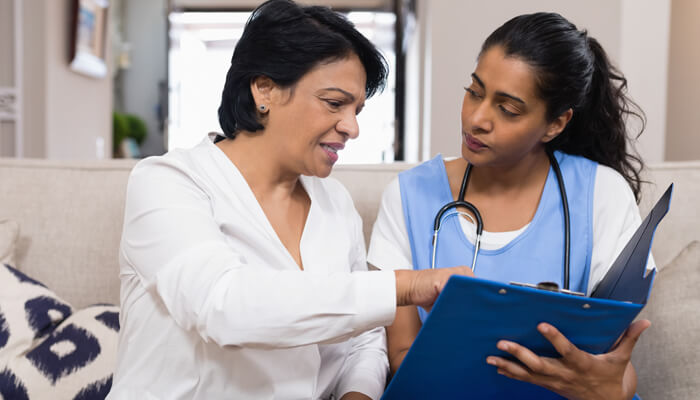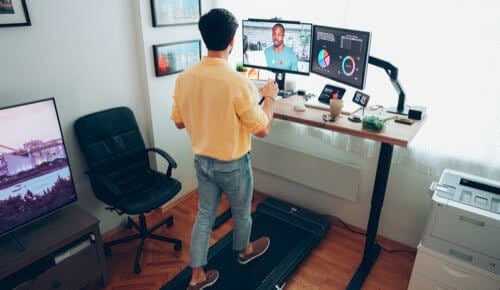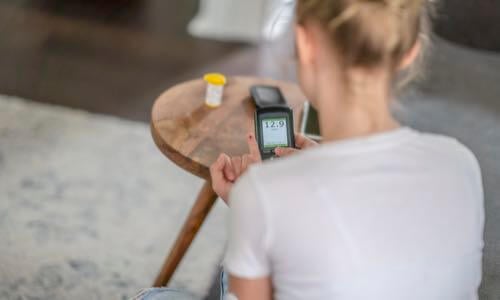Factors Affecting Health Equity
Numerous factors prevent many individuals living in underserved communities
from receiving adequate health care in the U.S. Some of the most difficult
hurdles include access to health insurance, inability to leave work or children
to attend appointments, language and cultural barriers, and mistrust of the
health care system.
In addition, social determinants of health (SDOH) within communities have a
huge impact on the overall health and well-being of every individual in that
community. Social determinants of health can include access to safe housing and
transportation, freedom from violence, racism, and discrimination,
opportunities for education and employment, and access to healthy food, clean
water, and air, among others.
Many basic needs taken for granted by some are not available to everyone.
This can have a serious impact on the health and well-being of entire
communities.
The Challenges of Screening in Underserved Communities
Because of the health risks associated with many underserved communities, it
is vital to communicate the need for health screening, including for Type 1
diabetes (T1D). Increasing participation of racial and ethnic minorities in T1D
screening is needed to help reduce the incidence of severe emergencies such as
diabetes-related ketoacidosis (DKA), and to provide early intervention,
monitoring, education, and support for improving their health outcomes.
Identifying Community Needs
A vital starting point for targeted health screenings or interventions for
any health care organization is conducting a community needs assessment. This
allows teams to collect information and data about a community to better
evaluate who the people are — the ethnic groups, their backgrounds, languages
(including exact dialects), their existing health needs, and SDOH in that area.
Better understanding the needs of the community helps organizations develop
effective plans for improving communication, outreach, and services to bridge
some existing gaps in health equity.
Universal SDOH screening can be part of the intake process by using a tool
that integrates with the electronic health record system to identify areas of
need. Along with staff training, this ensures everyone is asking the same
screening questions, which provides continuity across the organization.

Communicating With the Community About Screening
Knowing the community and understanding where and when individuals are
likely to gather helps create new opportunities to get the word out about screenings.
One of the most effective approaches for supporting screening in underserved
communities is creating either stand-alone events or joining pre-existing
events, or a combination of the two. Both types of events facilitate speaking
to people one-on-one or in small groups. Having a presence and being available
to answer individual questions and communicate the importance of health
screenings in language that's clear and easily understandable (and free from
medical jargon) is paramount.
Standalone events, such as health fairs, are more successful when they are
well publicized and centrally located. They can be especially impactful when
partnered with or staged at a community anchor location like a house of
worship, community center, senior center, or school, and when they offer
helpful free services and information for the community. You can be creative
and try a new location, such as renting a local movie theater to create a
pop-up health education event.
Pre-existing events such as food pantries, house of worship celebrations,
and pride parades are culturally responsive and often coincide with religious
or cultural observances, helping to reach specific populations. These events
tend to be regularly scheduled and well attended.

Breaking Down Barriers
For better health outcomes for everyone, it is crucial to help people
overcome the very real barriers preventing them from getting the screenings and
health care services they need.
Organizations can use social workers and community health workers to help individuals
access potential benefits and services they did not know about or did not have
the language skills to understand — or simply found too intimidating to apply
for. Whether they need to apply for the federal nutrition assistance programs SNAP
and WIC, the Supplemental Security Income program or some other service
or benefit, having someone guide them through the application process can make
all the difference.
Using trained navigators within the community, especially those who come
from the same background and speak the same language, can help individuals with
using transportation (using services like Uber Health), locating language
interpreters, and finding health care screenings and appointments outside
traditional working hours.
Best Practices for Communicating with and Educating People About T1D Screening
Courtney Harris, a patient navigator in the Type 1 Diabetes Screening Program at University Hospital New Jersey, describes a typical interaction with a community member in her clinic to showcase best practices for communicating with and educating individuals about screening importance and processes:
In our adult clinic, I encountered a middle-aged, African American woman who was visiting for a routine checkup. She was a ward of the state and lacked knowledge of her family’s medical history. I initiated the encounter by entering the exam room in a warm, friendly, nonintrusive manner. I introduced myself and my role as a patient navigator at University Hospital and informed her of our T1D early detection program and the benefits of screening. I asked if she would like to learn more, and she consented to further education.
I facilitated education about our T1D screening program, including a description of the stages and symptoms of T1D, an explanation of the importance of screening, how to access screening, and actions to take after receiving results.
Specific talking points I covered included:
- Promoting the free screening opportunity
- Explaining the difference between T1D and Type 2 diabetes (in response to individual questions)
- Clarifying that T1D can develop at any age, so our early detection program can reduce the risk for or delay health issues for families. Screening now can reduce the risk of something bad happening — such as DKA.
- Explaining that T1D can be hard to recognize, so our program can help determine an individual's risk in advance
- Screening provides information that allows for early treatment — which results in better disease management and better health for the individual.
The participant readily agreed to screening. I then contacted a clinician to conduct the screening. The clinician introduced herself and inquired if there were any concerns or questions the participant may have. The clinician thoroughly described and defined T1D, the role of autoimmunity, the screening process, how results were obtained, and post-screening procedures. The clinician also inquired about the participant’s family history. The woman shared that she was a ward of the state and had no awareness of her parent's medical history, which helped us confirm for her why being screened was so important.
The clinician obtained consent, collected demographic information, and reviewed how to use the screening kit and ship it to the lab. The participant thanked us for offering the service to her and assured me and the clinician that she would contact us if she had any questions.
I retrieved the participant's data from the lab via fax and forwarded them to the clinical team. The results were recorded by the clinical team using the electronic medical record (EMR) system. The participant thanked me for providing the service and reassured us that she would follow up if necessary.
This approach to participant interaction highlights the effective use of empathy, connection, communication, and education. The success of the interaction is clear, as the participant felt comfortable proceeding with the screening process and was willing to contact the clinic staff with questions and concerns in the future.
Summary
Health care equity can be achieved only through proactive measures that are
responsive to the needs of everyone in a particular community. Diabetes Care and Education Specialists and other health care professionals play a vital role in helping to build relationships with
community members to get the word out about how and why screening makes a
difference — for T1D as well as other health concerns.
Key Takeaways
- Understand the community.
- Be proactive to increase community engagement.
- Employ culturally responsive methods.
- Recruit members of the community as staff and use as trusted messengers.
- Maximize one-on-one conversations or small group interactions.
- Educate community members about the differences between T1D and T2D.
- Communicate how T1D screening can make a difference for their family.
- Provide access to and training around easy-to-use tech tools for communication such as patient portals.
- Offer screening and resources for services beyond health care to address SDOH.


 Guidance on clinical assessment, adjustments, report interpretation and key education. Designed to be used during clinic visits.
Guidance on clinical assessment, adjustments, report interpretation and key education. Designed to be used during clinic visits.-(3).jpg?sfvrsn=16486d59_5)






 Find danatech's interactive diabetes technology tools for point-of-care, insurance coverage and more.
Find danatech's interactive diabetes technology tools for point-of-care, insurance coverage and more.

















